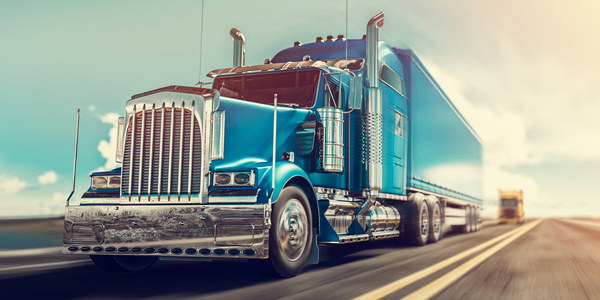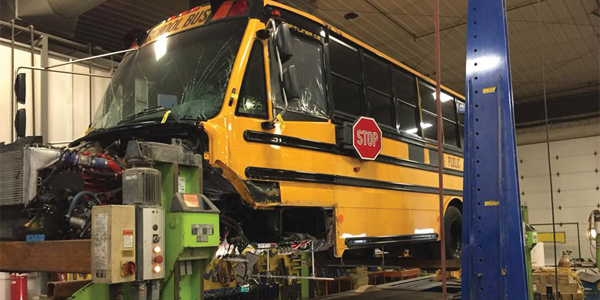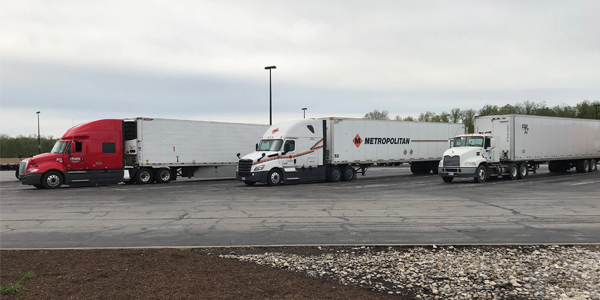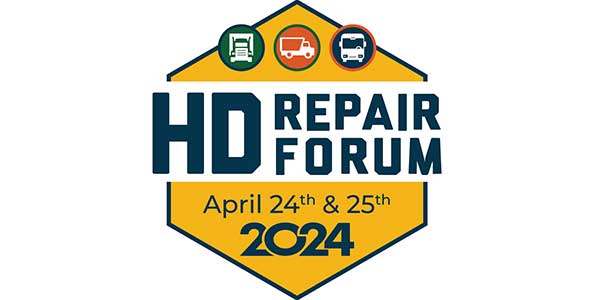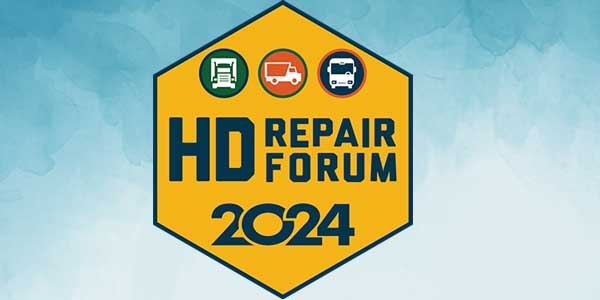Jerry Bandy started working on heavy-duty trucks in the late 1980s, when he was a vo-tech student on co-op at a local repair shop. Bandy, now the body shop manager for Kenworth of Cincinnati, has been hooked ever since.
“I dabbled on the car side for a little bit, but I came back to the heavy-duty side because I enjoyed it so much more than working on cars,” Bandy says.
Bandy has found that the “sheer size” of heavy-duty vehicles is intimidating to a lot of techs – who tend to think that the degree of repair difficulty is proportional to the trucks’ dimensions. But that’s not been the case for him.
“I’ve always found them easier to work on,” Bandy says. “It’s a lot easier to access things. You don’t have so many confined spaces and tight spots where you can’t fit your hand in or you can’t get a tool in. Yes, things are heavier and things are bigger. But personally, I just think they’re easier to work on.”
Dean Hancock, owner of Bob Johnson’s Body Shop in Cayce, S.C., says he’d “rather do trucks than cars any day.”
The labor rates are higher and, generally speaking, so are the margins. And while some heavy-duty repair shops interact with insurance adjusters on a regular basis, others – like Hancock’s shop – primarily deal with fleet managers from self-insured leasing companies or municipalities.
“The majority of it is repeat customers who you do over and over and over,” Hancock says of his business. “There’s no insurance person telling you that you’ve got 2/10ths too much on this, or you’re over on your clearcoat time.”
Bob Johnson’s Body Shop, a 27,000-square-foot facility with 22 employees, pulls in customers from a couple hundred miles away. Hancock can think of maybe two other shops in his local market that work on trucks.
“It’s such an untapped market,” he adds.
And the barriers to entry: high.
“Joe Blow from down the street just can’t open up his doors and go to work, because he’s not going to make that $125,000 investment for a paint booth,” Hancock says. “Most people don’t just open up in their backyard and start fixing trucks. Most people don’t have a building that big in their backyard.”
Everything’s Bigger
The shop owners and managers who talked to BodyShop Business for this story love the work (and the higher margins, of course). But that’s not to say that it’s easy money. On the contrary: In a lot of ways, heavy-duty collision repair isn’t for the faint of heart.
“Everything on the truck is heavy. It’s big, it’s awkward and there are a million pieces on the inside of the sleepers,” says Chad Kurtz, body shop working foreman/manager for Rihm Kenworth in Coon Rapids, Minn. “You have to be a plumber, an electrician, a fabricator, a painter and a body guy, because there’s plumbing and wiring in these big trucks. It’s like working on a motor home. So you kind of have to be everything.”
And the stakes are higher for the customers, who lose money – some more than others – every day that semi, bus or service truck is out of commission. For example, in the nation’s heartland, grain trucks can lose up to $10,000 a day if they’re offline during harvest season, according to James Wilson II, co-owner of ICS Collision Center in Derby, Kan. For long-haul truckers, downtime might require a motel stay.
Over-the-road semis can be six-figure investments, and truckers might drop another couple grand on chrome work. So, while heavy-duty collision shops might not suffer as many insurance headaches as their light-duty brethren, there’s plenty of pressure to get the job done quickly – and right.
“You’d be surprised how particular most of these truck drivers and truck owners are,” Bandy says. “They’ve got a lot of money invested in these vehicles, and they want to make sure they look exactly like they did when they were brand new, and want them put back together to the exact specifications when they were brand new. They’re pretty picky.
“ … A lot of these guys live out of these trucks. This is a rolling home, their main source of income and their business. So they treat it like it’s their greatest investment, and it kind of is, really.”
Monsters Repairing Monsters
At Budget Truck and Auto in Janesville, Wis., technicians use a 65-foot-long frame rack to fix big hits on semi-trucks and large service vehicles. Each of the frame rack’s 14-foot-tall towers delivers 50 tons of hydraulic power. When the shop bought it in 2006, the price tag was in the ballpark of $250,000, according to Mark Polzin, president and partner of Budget Truck and Auto.
Budget Truck and Auto, a 45,000-square-foot facility with 48 employees, also has three paint booths measuring over 65 feet long each.
Not to be outdone, Rihm Kenworth has a downdraft paint booth and a sidedraft paint booth, connected by a rollup door. Open the door and the booths turn into “a 98-foot monster” that can accommodate a truck-trailer combination. The price tag, according to Kurtz, was in the ballpark of $750,000.
Rihm Kenworth also has a six-tower frame rack (price tag: $115,000) with 25-ton tower power. A light-duty frame rack might max out at 10 tons per tower. Says Kurtz: “We could rip a building in half if we needed to.”
Big-ticket items – which, of course, are bigger-ticket items in the world of heavy-duty repair – aren’t the only investments to consider. At ICS Collision Center in Wichita, specialty tooling is a major expense, according to Wilson.
For example, to replace an aluminum panel on a Freightliner Cascadia, you need a specialty gun with multiple tips for the various Huck fasteners that go on the vehicle. “The tool itself is right around $4,000,” Wilson says. “ … It adds up rather quickly.”
Heavy-duty repair shops also need to have the proper equipment to address OSHA’s requirements for fall protection – which kick in any time an employee is working at heights of 4 feet or up.
Of course, all of this is moot if you don’t have enough space to comfortably accommodate the vehicles. Wilson, who recently moved his shop from a 2,400-foot facility in Wichita to a 10,000-square-foot building (with an 1,800-square-foot mezzanine level), can attest to that.
Wilson says of his former location: “It’s a 60-by-40 building with three 14-foot overhead doors, so when you pull in a 38-foot city bus and close the doors in the middle of winter, you can imagine how challenging it was to move around the shop.”
Simply put, if you’re thinking about getting into heavy-duty repair, you need to think big. At the “bare minimum,” Wilson says, you need a facility with 14-foot-high overhead doors. And in addition to the space required for production, you’ll need ample room needed for parts storage – because everything is bigger in heavy-duty repair.
“When you’re tearing all those parts off, they don’t necessarily fit on your standard parts carts,” Wilson explains. “So you have to have that storage plus the additional square footage for the new parts when they come in so you can mirror-match them.”
Repair Specs, Training Hard to Find
Probably the biggest difference between light-duty and heavy-duty collision repair is the disparity in the availability of training and repair resources.
On the light-duty side, there’s an industry-wide push for shops to arm themselves with the knowledge and skills required to perform safe, proper repairs through I-CAR training, OEM certification and other sources. And in the wake of the John Eagle verdict, the chorus of voices urging repairers to follow OEM repair specifications has hit a fever pitch.
On the heavy-duty side, however, those resources are hard to come by.
“Unlike the light-vehicle industry, the manufacturers in the heavy-duty market don’t have or offer a lot of support right now for the repair community,” says Brian Nessen, principal for the HD Repair Forum. “And that’s a pretty big bridge that has to be built.”
Nessen hopes that the HD Repair Forum can help bridge the divide. During the inaugural event, which took place April 11-12 in Fort Worth, Texas, representatives from Peterbilt and Navistar were on hand to talk about current and future technology in their respective truck lineups.
“We’re trying to encourage [heavy-duty OEMs] to share more information on proper repairs for these vehicles,” Nessen adds.
Despite the dearth of OEM repair information, Polzin emphasizes that heavy-duty collision shops do everything they can to ensure safe, proper repairs. Shops take advantage of training from their paint, material and equipment suppliers, and Polzin points out that he’s built strong relationships with some of the bus and truck OEMs – and he isn’t shy about asking them for guidance.
“We do a lot of research, and we reach out to other shops,” says Polzin, a member of the HD Repair Forum advisory board. “We’re kind of building a network, especially with the HD Repair Forum. … Networking is huge.”

